A facility energy audit is when a knowledgeable and reliable person from an experienced material handling solutions provider assesses your energy use and facility layout. The goal is to find areas where you could potentially enhance efficiency and reduce operational expenses by utilizing forklift power options and optimizing facility power layouts such as storage and charging locations.
Performing a facility energy audit is helpful for two reasons:
- You get recommendations customized to your particular application and business operations, emphasizing practical solutions.
- You get ideas you can implement immediately or later when replacing existing equipment, providing an opportunity to prepare for the changes and budget for them in advance.
These recommendations typically include the following:
- Process enhancements
- Reorganizing your current fleet
- Investing in new charging systems, batteries, or other equipment
Through the implementation of the suggested solutions, you can potentially experience a return on investment in several areas, including:
- Energy conservation
- Reduced equipment costs
- Increased throughput
- Recovered storage or charging space that can generate income
- Improved operator productivity, comfort, and satisfaction
FACILITY ENERGY AUDIT PROCESS
Here are the seven areas typically evaluated during a facility energy audit:

1. Charging Stations: With the aid of an electrician or facilities manager, auditors will inspect your current battery charging station to evaluate several areas, including:
- Incoming line voltage
- Types and quantity of chargers employed
- Area occupied
- Position of the charging station to other operations and spaces
2. Battery Storage: The auditors will also assess your current battery storage facilities and practices, considering factors like:
- Quantity of batteries stored
- Method of storage
- Number of trucks supported
- Amount of facility space occupied by the batteries
3. Forklift Specifications: The auditors will evaluate your fleet, considering data including:
- Size (number of trucks and capacity)
- Age
- Technology mix
- Usage
- Additionally, a data-logging device may be installed on one or more of the trucks at your facility for around a week to collect information on actual energy consumption.
4. Fueling Stations: Auditors will inspect IC fueling stations from multiple perspectives. They may evaluate the following:
- Number of trucks serviced by the stations
- Amount of fuel consumed
- Frequency of refueling requirements
- Location of the stations to other vital areas and operational spaces
5. Application: The auditors will watch the equipment in operation to pinpoint significant performance requirements. Although the list is extensive, some crucial aspects analyzed include: 
- Number of shifts operated
- Required lifting height of your equipment
- The intensity of your duty cycle
- Maximum load weight transported
- Break schedule for opportunity charging
- UL requirements
- Other special needs like connector type, connector color, spacers, or tray adders
6. Maintenance Areas: Auditors will also observe and assess battery swapping, watering stations, and other maintenance activities, including:
- Type of watering systems and other equipment used
- Space and layout designated for maintenance
- Tools and accessories provided to operators and technicians to carry out maintenance tasks
7. Facility Power Considerations: The auditors will examine not just your usage capacity (the maximum power capacity that your facility can provide to your equipment) but also the following:
- Electrical systems that your facility is currently operating
- Current overall throughput (the daily amps consumed)
- Throughput during peak seasons
GET EXPERT HELP WITH YOUR FACILITY ENERGY AUDIT
For more in-depth information on facility energy audits, download Toyota Material Handling’s 28-page white paper: Exploring Forklift Energy Solutions for Maximum ROI.
Developing and implementing a successful energy adoption strategy can enhance efficiency and lower operational costs. To ensure a successful facility energy audit, let us help. If you’re in Los Angeles County, contact us to schedule an appointment with an expert today.
Tags: electric forklifts, free resources, productivity
